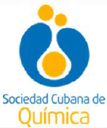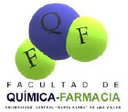Executive Secretary

VII Simposio Internacional de Química 2019
SIQ 2019
Resumen
Metaldehyde (MA) is an organic compound widely used in agriculture all around the world as molluscicide. There are growing concerns that relatively high levels of MA have been detected in surface water what could be ascribed to the fact that it is transparent to common wastewater treatment processes. A theoretical study of the influence of activated carbon (AC) surface groups (SGs) on MA adsorption is done in order to help understanding the process and to evaluate the influence of the acid SGs over the adsorption in AC filters. Multiple Minima Hypersurface methodology was employed in order to study the interactions of the MA with acid SGs (hydroxyl and carboxyl) at acidic and neutral pH and different hydration conditions taking explicitly into account the solvent influence. Selected structures were re-optimized using Density Functional Theory and posteriorly refined to achieve a well-defined electron density to characterize the interactions by the Quantum Theory of Atoms in Molecules approach. The obtained results showed that the presence of SGs enhances the adsorption process. The deprotonated carboxyl and hydroxyl SGs of AC models show the strongest interactions, suggesting a greater adsorption at neutral pH which is in concordance with experimental data. The main interactions are of dispersive nature between the pesticide and the π-cloud of the AC and hydrogen bonds between the MA and the acid SGs suggesting that the adsorption process is driven by a physisorption mechanism. Water acts as an intermediary between the AC and MA and competing with it for the adsorption sites.
Abstract
Metaldehyde (MA) is an organic compound widely used in agriculture all around the world as molluscicide. There are growing concerns that relatively high levels of MA have been detected in surface water what could be ascribed to the fact that it is transparent to common wastewater treatment processes. A theoretical study of the influence of activated carbon (AC) surface groups (SGs) on MA adsorption is done in order to help understanding the process and to evaluate the influence of the acid SGs over the adsorption in AC filters. Multiple Minima Hypersurface methodology was employed in order to study the interactions of the MA with acid SGs (hydroxyl and carboxyl) at acidic and neutral pH and different hydration conditions taking explicitly into account the solvent influence. Selected structures were re-optimized using Density Functional Theory and posteriorly refined to achieve a well-defined electron density to characterize the interactions by the Quantum Theory of Atoms in Molecules approach. The obtained results showed that the presence of SGs enhances the adsorption process. The deprotonated carboxyl and hydroxyl SGs of AC models show the strongest interactions, suggesting a greater adsorption at neutral pH which is in concordance with experimental data. The main interactions are of dispersive nature between the pesticide and the π-cloud of the AC and hydrogen bonds between the MA and the acid SGs suggesting that the adsorption process is driven by a physisorption mechanism. Water acts as an intermediary between the AC and MA and competing with it for the adsorption sites.
Sobre el ponente

Ph. D. Ulises J. Jáuregui-Haza






